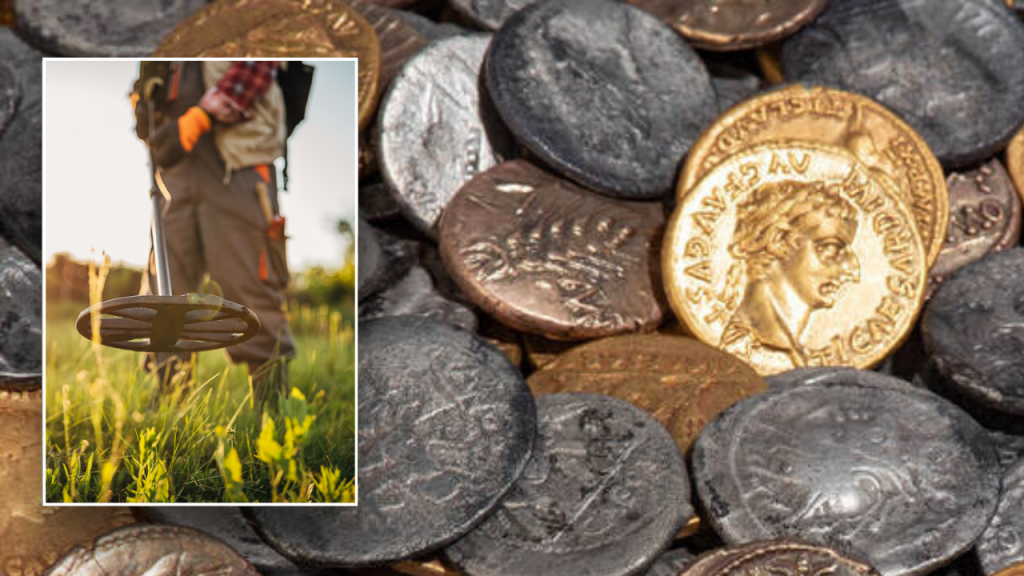In the autumn of 2023, two metal detectorists, Gert-Jan Messelaar and Reinier Koelink, made an extraordinary discovery near Bunnik, in the province of Utrecht, Netherlands. Their find, a hoard of 404 gold and silver coins, remained undisclosed to the public until January 2024, when the Cultural Heritage Agency of the Netherlands announced the unique find. The remarkable aspect of this discovery lies in the composition of the hoard: a combination of Roman and British coins, making it a one-of-a-kind find in mainland Europe. This unusual blend of currency provides valuable insight into the interactions between the Roman Empire and Britannia during the early Roman expansion into the British Isles.
The hoard consists of 42 British coins known as “staters,” dating from 5 B.C. to 43 A.D., and 362 Roman coins minted between 200 B.C. and 47 A.D. The British coins bear the inscription of Cunobeline, a British king who ruled from 9 to 43 A.D. These coins, composed of gold, silver, and copper, represent a significant piece of British history during the early Roman period. The presence of these British coins within the hoard raises intriguing questions about their acquisition by the owner. Were they acquired through trade, or were they spoils of war, taken from defeated British tribes?
The Roman coins offer a fascinating glimpse into the monetary system of the Roman Empire. Among the 362 Roman coins, 72 were gold aurei, dating from 19 B.C. to 47 A.D. Two of these aurei were particularly noteworthy, showing no signs of wear and appearing to have been freshly minted when acquired. The relatively wide range of dates among the Roman coins indicates a period of accumulation, suggesting that the hoard was gathered over time rather than acquired all at once. The “youngest” Roman coins date back to the reign of Emperor Claudius, who ruled from 41 to 54 A.D.
The unique location of the hoard, within the northern border region of the Roman Empire known as the Lower Germanic Limes, adds another layer of significance to this discovery. This limes marked the boundary between the Roman provinces of Germania Inferior and Germania Magna, and the hoard’s presence there supports the notion that this region played a crucial role in the Roman conquest of Britannia. The discovery provides tangible evidence of the movement of Roman soldiers and their interactions with the native British populations. It’s theorized that the hoard belonged to Roman soldiers returning from campaigns in Britannia, with the Roman coins representing their pay and the British coins possibly acquired as war booty.
The discovery marks not only the largest such find in the province of Utrecht but also the only known combined Roman-British coin hoard ever found in mainland Europe. While similar hoards have been discovered in the United Kingdom, this particular find represents a unique archaeological discovery in continental Europe. The combination of Roman and British coins found together in this context is unprecedented and offers invaluable insight into the dynamics between the Roman Empire and the British Isles during a period of intense conflict and cultural exchange. The find highlights the role of the Lower Germanic Limes as a crucial staging point and transit area during the Roman military campaigns in Britain.
The preservation and study of this remarkable coin hoard will undoubtedly enrich our understanding of the complex relationship between the Roman Empire and Britannia. This unique combination of Roman and British coins offers a rare opportunity to delve into the economic, military, and cultural interactions between these two distinct civilizations during a pivotal period in European history. Further research and analysis of the coins may reveal more specific details about the individual who collected them, the circumstances surrounding their acquisition, and the historical context of the hoard’s burial.


